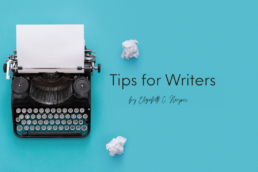It’s not easy to write interesting copy, an interesting book, an interesting script, etc. If you don’t connect with your readers properly or give them something to latch on to, you’ll lose them in the first few paragraphs.
My number one tip for not boring your readers is to tell a story. It doesn’t have to be a lengthy story and it doesn’t have to have a plot or dialogue or anything else – it just has to take them from point A to point B, or help them visualize a real-life situation.
Here’s an example of some writing that’s rather boring due to a lack of storytelling:
“AirPods are headphones without wires. They come with a case that has a connector for charging, and they allow you to listen to sounds without having to be right next to the device. They are superior to other types of headphones.”
Okay. So they’re headphones, so they have no wires, so they’re “superior.” And? Snooze.
Let’s tell a story instead:
“AirPods allow you to live life untethered. Even though they’re wireless, these headphones give you the same crisp sound without the worry of untangling knots in the wires, threading wires through your coat in winter, or brushing them out of your face during a jog. You can charge the AirPods easily with the included case, and they’re still small enough to fit in your pocket.”
See the difference?
I told micro-stories, in a sense. I brought the AirPods to life by creating real-world scenarios that the reader could visualize. There is no true beginning or end for the storytelling here, like you’d see in a novel or short story; it’s just me allowing the reader to move quickly through the different experiences one has when using headphones. It makes a static thing more vibrant and interesting.
You can apply this technique to many types of writing. In fact, the original purpose of writing was to record information or to document oral stories. So why not focus on storytelling first?
Other things that make readers bored:
- The same type or length of sentences, over and over again.
- A lack of detail in the descriptions.
Let’s take a look at this example:
“Josh went to visit his mother. He knocked on the door softly. She peered through a crack. She recognized his face so she opened the door. He smiled and walked inside.”
All of the sentences start with Josh/he/she plus a verb. Most of them are almost the same length, and there isn’t much detail for me to visualize. All I can imagine is a man with no features who is either young or middle-aged, some sort of door, and a woman who also has no features and could be aged forty to ninety (we don’t know).
We do almost get a clue because she peers through a crack rather than opening the door immediately, but this could mean: 1. she’s old, 2. she’s mentally ill, 3. someone is after her, or 4. she’s got PTSD from some sort of past experience. Don’t leave the reader guessing which it is.
How about this instead:
“Josh went to visit his mother. He knocked on the door softly, and she peered out through a tiny crack in an effort to recognize his face. Relief washed over her as she took in the brown hair brushing his forehead, the blue eyes she’d stared into for the past thirty-five years, and the familiar bag of groceries at his side. She opened the door fully then. Josh smiled broadly at his mother, wrapped his arms around her frail body and lifted her briefly into the air, and stepped inside.”
In this version, I only started sentences with “he” or “she” once, I created some compound sentences (with commas) to change the pacing, and I began one of the sentences with the word “Relief” for some variation in construction. I also added lots of descriptive detail.
We now know a bit of what Josh looks like, how old he is, why he’s there, and how much he adores his mother. We also know more about his mother’s age, her state of health, and that these visits are regular occurrences she’s come to expect.
See what I mean?
So to summarize:
- Tell a story or take the reader through real-world scenarios.
- Vary the sentence structure and mix simple sentences with compound ones.
- Add enough detail so your reader can truly visualize whatever you are trying to create.
There are other things that make readers bored, like a poorly constructed plot for a novel, but from a mechanics and crafting perspective, these three techniques are good places to start if you want to improve your work immediately.
Happy writing!
———
To leave a comment or share this post, scroll down.
My first book, Halfway There: Lessons at Midlife, was released on August 18, 2020 by Warren Publishing and was re-released on February 16, 2021 by White Ocean Press. To read an excerpt, check out reviews, see the author Q&A, or find links to buy, click the Learn More button.
Sign up for writing tips:
Email sign-up is temporarily paused for writing tips. Please use the small “click here” link below to sign up for blog posts instead.
Emails are limited to new writing tips and service-related announcements. To get updates on my books, blog, podcasts, and other personal endeavors, click here.
